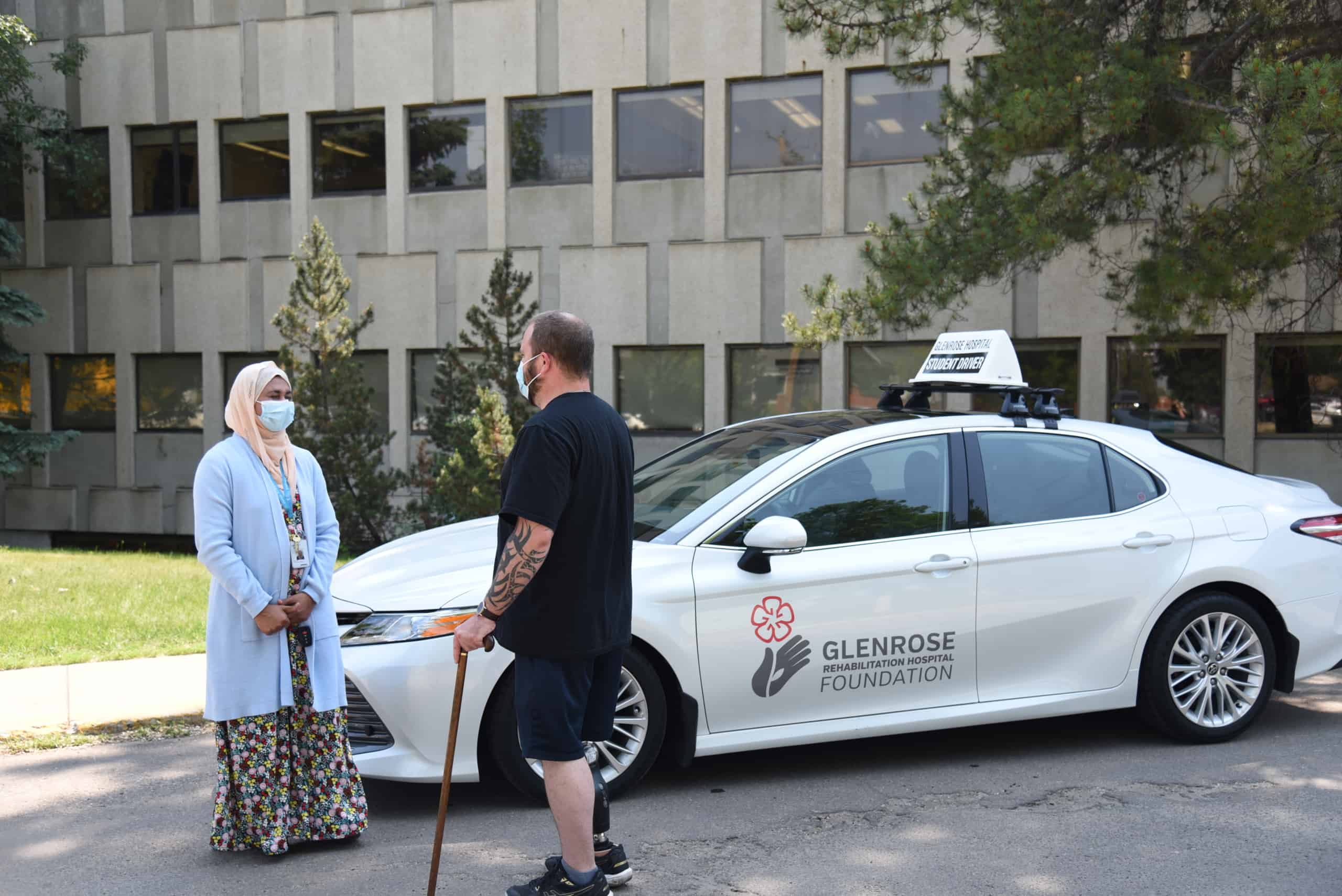Embracing Independence: Driver Evaluation and Training
After experiencing a life-altering accident, regaining independence and a sense of normalcy is essential for patients undergoing rehabilitation. One key milestone patients are often eager to achieve is the ability to drive again. The Glenrose Driver Evaluation and Training Service (DETS) helps many patients achieve that goal. DETS provides driving assessment, counseling, and training for people 16 years of age and older (with Learner’s permit) who have a disability or health conditions that may affect their ability to drive. This includes assessments to determine appropriate adapted controls, as well as virtual and on-road practice to learn new techniques.
Glenrose Foundation donors recently funded a new vehicle for the DETS program.
Every patient’s journey is unique, and it is critical to meet their individual needs. The adapted controls on the new vehicle are designed to accommodate a wide range of physical limitations. These modifications include hand controls for those with lower limb impairments, spinner knobs for limited hand mobility, and a left foot accelerator pedal for those unable to drive with their right leg. By tailoring the vehicle to each patient’s specific requirements, the program ensures inclusivity and equal opportunity for all participants.
The program uses experienced occupational therapists and driving instructors who specialize in assessing and training individuals with cognitive, visual and physical disabilities. They provide patients with the necessary skills and knowledge to enable safe driving and adapt to the necessary vehicle modifications. Through patient-centered training, individuals gain the confidence to overcome initial anxieties and gradually regain their driving skills.
One Glenrose patient, Michael, couldn’t wait to get back behind the wheel after a serious motorcycle accident.
He was involved in a hit-and-run that left him in critical condition. After a week in a coma, and multiple surgeries, Michael had his right leg amputated. When he was strong enough, he was transferred to the Glenrose Hospital to begin rehabilitation. During that initial stay, he focused on rebuilding his strength and transfers to and from his wheelchair. After six weeks he was discharged and went home to continue his recovery. A few months later he was back at the Glenrose, as part of the prosthetics program. He spent another six weeks relearning to walk with his new prosthesis.
During this time, Michael was relying on friends and family to drive him to his appointments. He was eager to get back to driving himself and mentioned it to his care team at the Glenrose. They told him about the DETS program and encouraged him to go for it. Michael started on the virtual driving simulator where they tested different adaptive equipment and decided the left foot accelerator would be the best fit. He then completed an assessment with a DETS occupational therapist followed by training sessions in the road vehicle, with a driving instructor. The DETS program supported Michael with getting a left foot accelerator installed in his own vehicle and it didn’t take long for Michael to be ready to drive on his own again.
The driving program meant the absolute world to me because they literally opened up the world. I went from being trapped in my house and feeling like a prisoner, to getting some normalcy back. And you don’t realize how important that is, to be able to drive yourself around, until you can’t. ~Michael, Glenrose Patient
Driving themselves enables individuals to reclaim their independence, restore their sense of freedom, and actively participate in their communities. Thank you to the donors who supported this critical program through the purchase of a new vehicle.
